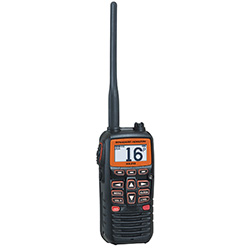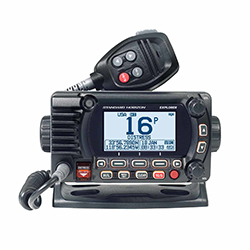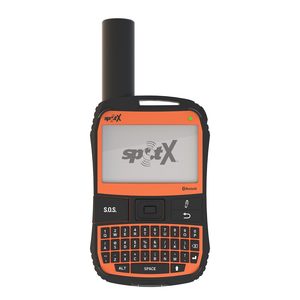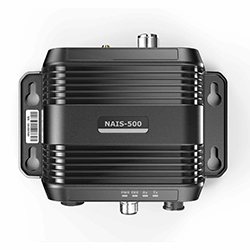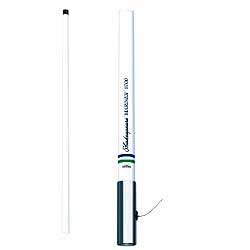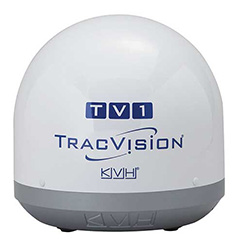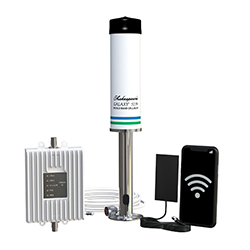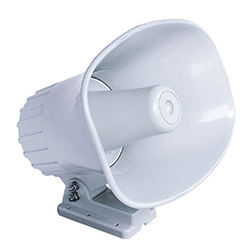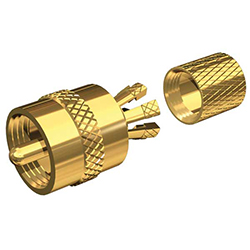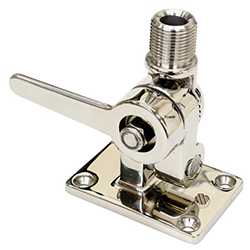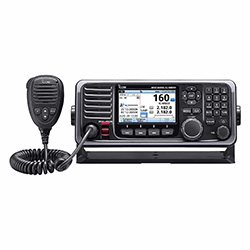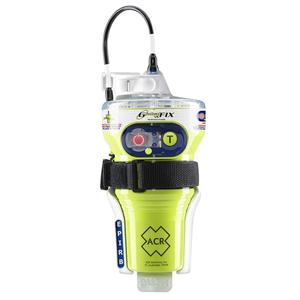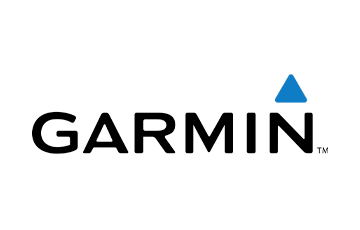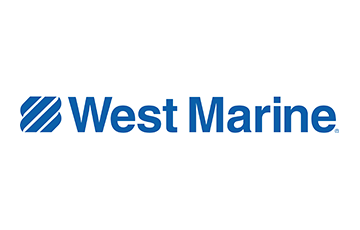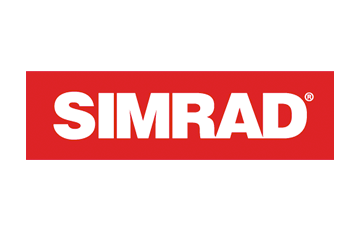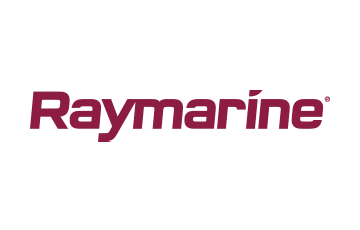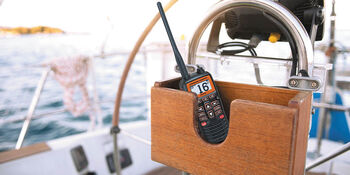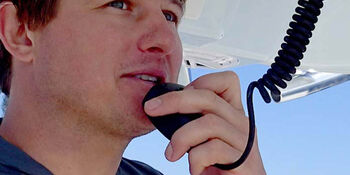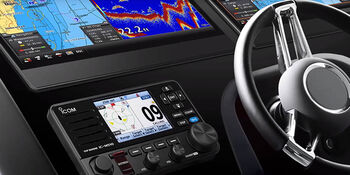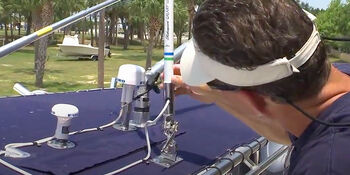Your VHF radio is the primary way for you to communicate with other boat operators or a bridge tender, lock operator, harbormaster, race committee, and rescuing agencies like the Coast Guard or a towing service. Arguably the most important safety item onboard your boat, a VHF radio is far more reliable than a cell phone which suffers from limited on-water range and dropped calls.
Advice & How-To
On-the-Water Communication for Your Boat
Out on the water, keeping in touch with the world around you and being able to communicate with friends, family, other boats and if necessary, search and rescue agencies is an important aspect of marine safety. Following is a whirlwind tour of what West Marine offers to keep you in touch.
Fixed Mount VHF Radios
VHF (Very High Frequency) radios provide two-way communication and have a range of 5 to 25 miles. A VHF radio is one of the most important safety items to have on board. In coastal or inland waters, a VHF radio is generally the fastest link to rescuing agencies like the Coast Guard, a towing service, or a harbormaster. The range of transmission of VHF radios is defined as line of sight, which means that VHF signals do not bend over the horizon, as AM or SSB (Single Sideband) signals do. The range of transmission is maximized by locating a VHF radio’s antenna as high as possible above the water.
Handheld VHF Radios
For inflatable boats, kayaks and other small craft where installing a fixed-mount VHF is not practical, we suggest purchase of a handheld VHF radio. We also suggest a handheld VHF radio be kept on board larger boats as a backup to a fixed-mount VHF in case the radio or its antenna is damaged.
Handheld Satellite Communication Devices
When your boating adventures take you outside of cell phone coverage, using a handy handheld satellite communication device is a great way to keep friends and family informed of your status and location, or in an emergency, alert emergency agencies of your situation. When shopping for a satellite communication device, be sure to consider its battery life and make sure to choose one with a subscription plan that works for you.
AIS Transponders and Antennas
Automatic Identification Systems (AIS) help to prevent collisions between boats by broadcasting a vessel’s position so that other boats are aware of its position. Some AIS units include a display while others are designed to be used along with a multi-function display. Installing an AIS system on your boat is a great way to keep track of the positions of other boats (that are also equipped with AIS) which is a big win for situational awareness.
Short Wave Radios
SSB (Single Side Band) radios are a type of high-powered, two-way, shortwave radio that operates in the High Frequency (HF) band, which allows them to broadcast practically worldwide. Typical uses include calling the Coast Guard in an emergency and communications between bluewater cruisers.
Installation of a SSB is quite complicated compared to installation of a VHF radio or GPS. The reason is that the lower frequencies and higher power of a SSB requires a long antenna (23′), an antenna coupler (sometimes called an antenna tuner) and something called a counterpoise, or RF ground.
EPIRBs and PLBs
EPIRBs (Emergency Position Indicating Radio Beacons) and PLBs (Personal Locater Beacons) are two of the most important pieces of equipment to have on your boat. EPIRBs and PLBs are radio transmitters. When activated in an emergency, they broadcast a 406 MHz signal via satellite to the Cospas-Sarsat global emergency network. Both also broadcast a 121.5 MHz homing signal to SAR personnel. West Marine offers two categories of EPIRBs. Category I EPIRBs are designed to automatically release from their bracket and activate their emergency signal when submerged between 3′–14′ of water. Category II EPIRBs require manual activation. While EPIRBs are for use on boats, PLBs are for personal use.

